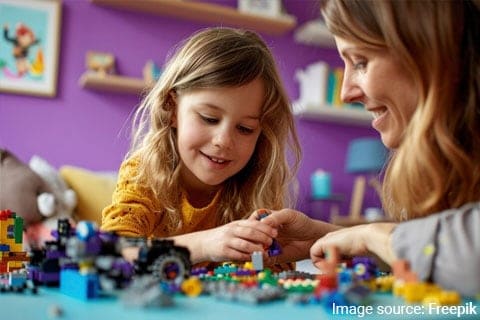Childhood trauma is a pervasive issue that can have long-lasting effects on individuals’ mental, emotional, and physical health. A variety of therapeutic interventions have been developed to address the complex needs of those who have experienced trauma, particularly children. Research in South Africa, as explored in Tsheole et al.’s 2023 article, highlights several effective methods for treating childhood trauma, combining art and play therapy with Trauma-Focused Cognitive Behavioral Therapy (TF-CBT).
Art and Play Therapy: Creative Approaches to Healing
One of the standout interventions identified in Tsheole et al.’s research is a pilot program that combines art and play therapy. Art therapy, as defined by Woollett et al. (2020), is a treatment that involves patients working with art therapists to use art materials and the creative process to explore their emotions, foster self-awareness, reduce anxiety, and increase self-esteem. This approach is particularly effective in helping traumatized patients express feelings that may be difficult to articulate through words alone.
Similarly, play therapy offers a systematic model where therapists use play to enhance relationships, role-playing, communication, and mastery of skills. This method is designed to help children prevent or resolve psychosocial difficulties and achieve optimal growth and development. By engaging in play, children can process their trauma in a safe and supportive environment, which facilitates healing.
Trauma-Focused Cognitive Behavioral Therapy (TF-CBT)
The pilot intervention also incorporated TF-CBT, a well-established approach that has shown effectiveness in treating both children and their parents. TF-CBT involves a range of strategies, including psychoeducation, parenting skills, relaxation techniques, affect regulation, cognitive coping, and conjoint child-parent sessions. These components work together to help children and their families process traumatic experiences and develop healthier coping mechanisms.
The research emphasizes that the effectiveness of these interventions is heightened when they are implemented during the child’s school years. During this developmental stage, children are more receptive to learning new skills, making it an ideal time to introduce therapeutic interventions that can support their long-term recovery.
The Impact of Childhood Trauma on Attachment and Somatization
Another critical aspect of childhood trauma is its impact on attachment patterns, which can significantly influence an individual’s physical and emotional well-being later in life. Greenman et al. (2024) discuss how childhood trauma can lead to the development of insecure attachment styles, which in turn can increase susceptibility to somatization—a phenomenon where psychological distress manifests as physical symptoms. These symptoms can include DNA damage, metabolic syndrome, obesity, physical pain, functional neurological disorder, and non-epileptic attack disorder.
The study found that adults with insecure or avoidant attachment styles were particularly prone to somatization. To address this, the authors suggest Emotionally Focused Therapy (EFT) and EFT-based interventions. EFT helps individuals build stronger emotional bonds with their family, friends, and loved ones, which can lead to more secure attachments. By improving these relationships, individuals can experience relief from their somatic symptoms, ultimately leading to better overall health.
Conclusion
The research from South Africa underscores the importance of implementing evidence-based interventions, such as art and play therapy, TF-CBT, and EFT, to effectively treat childhood trauma. These approaches not only address the emotional and psychological needs of traumatized individuals but also have the potential to mitigate the physical symptoms that often accompany unresolved trauma. By fostering secure attachments and providing creative outlets for expression, these therapies offer a comprehensive path to healing for those affected by childhood trauma.
References:
- Greenman, P. S., Renzi, A., Monaco, S., Luciani, F., & Di Trani, M. (2024). How does trauma make you sick? The role of attachment in explaining somatic symptoms of survivors of childhood trauma. Healthcare, 12(2), 203. https://doi.org/10.3390/healthcare12020203
- Tsheole, P., Makhado, L., & Maphula, A. (2023). Childhood Trauma and Exposure to Violence Interventions: The need for Effective and Feasible Evidence-Based Interventions. Children, 10(11), 1760. https://doi.org/10.3390/children10111760
- Woollett, N., Bandeira, M., & Hatcher, A. (2020). Trauma-informed art and play therapy: Pilot study outcomes for children and mothers in domestic violence shelters in the United States and South Africa. Child Abuse & Neglect, 107, 104564. https://doi.org/10.1016/j.chiabu.2020.104564

